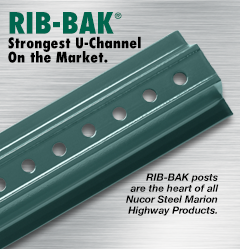RESEARCH
Enjoy studying. If there is a paper or link we are missing, please let us know about it by contacting webmaster@nucor_hwy.local.
High-Tension Cable Barrier Research
- Guidance for the Selection,
Use, and Maintenance of
Cable Barrier Systems - 2007 FHWA Memorandum on Post Spacing
- 2007 WSDOT Cable Median Barrier Report July 2007
- 2007 Eliminating Cross-Median Fatalities: Statewide Installation of Median Cable Barrier in Missouri
- 2006 FLDOT Design Presentation on High Tension Cable Barrier Systems
- 2006 Ohio’s Perspective on Cable Median Barrier (In Service Statistics)
- 2005 Ohio DOT Field Visits to Cable Median Barrier Projects
- 2005 AASHTO Technology Implementation Group on Cable Median Barriers
This has extensive reports on it from various states that are leading the way in use of cable median barriers.
- 2005 An Analysis of the Safety Impacts and Costs of Crossover Median Crashes in Wisconsin
- 2003 Flexible Barrier Systems Along High-Speed Roads in Victoria Australia
(Includes analysis of use of cable median barriers in Sweden)
Low-Tension Cable Barrier Research
- 2005 Keeping Traffic on the Right Side of the Road
North Carolina saved lives by installing cable barriers on freeways where the median width is less than 21 meters (70 feet) - 2004 Improving Highway Safety: Cable Median Barrier
General Cable Barrier Research
- 2009 NCHRP 22-21 [Active] Median Cross-Section Design for Rural Divided Highways & NCHRP 22-22 Placement of Traffic Barriers on Roadside and Median Slopes
- 2007 WSDOT Cable Median Barrier Report July 2007
- 2006 Large Truck Crash Causation Study Data (FMCSA)
- 2006 Chapter 6: AASHTO Roadside Design Guide PowerPoint Presentation (by Dick Powers, FHWA)
PowerPoint presenations are active content. File is safe to allow blocked content.
- Crash Video showing importance of placement of cable barriers in median (4MB MPEG)
This video shows the result of placing cable within the 1′ to 8′ range of ditch centerline.
FHWA recommends that barrier NOT be placed in the 1′ to 8′ zone of bottom of median. For more information:
- 2006 FHWA Summary: Cable Median Barriers
- 2006 PennDOT study shows dividers save lives (Warrant width discussion)
- 2006 Washington I-5: Marysville/Arlington Cable Barrier – Executive Summary
- 2005 AASHTO Technology Implementation Group on Cable Median Barriers
This has extensive reports on it from various states that are leading the way in use of cable median barriers.
- 2005 TRB 2786 Developing Guidelines for Median Barrier Installation: Benefit-Cost Analysis with Texas Data
- 2005 WISCONSIN DOT Median Crossover Crashes and
CODES Data Analysis Final Report - GUARDRAILS / MEDIAN BARRIERS, A Guide to Standardized Highway Barrier Hardware, AASHTO
- NCHRP Project 17-18(3) Strategy 18.1 B2—Median Barriers for Narrow Medians on Multilane Roads
- 2005 FHWA Letter HDA-CO Cable Barrier Systems in Median
- 1999 Comparison tool for highway improvement projects, VDOT, Excel worksheet
Page 7, 2005 AASHTO Revised Chapter 6: Median Barriers, AASHTO Roadside Design Guide
Page 2-11, Washington State Report I-5 Marysville Cable Barrier
Funding Resources for Cable Barrier
Often DOT engineers want to put in barriers but do not know of funding sources or how to go about getting it. We hope the following information can help.
- FHWA description of the Federal-aid reimbursement eligibility process for roadside safety hardware
- SAFETEA-LU and Guardrail Dollars available to You Slideshow (PPT)
- ATSSA’s SAFETEA-LU Safety Program Summary
- States must develop a Strategic Highway Safety Plan (SHSP) to be eligble for funding under SAFETEA-LU
- ATTSA’s Low Cost Local Road Safety Solutions (See pages 35-38). While SAFETEA-LU funds are to be administered by state Departments of Transportation, Congress has directed that they be targeted at rural roads that have fatality rates that exceed statewide averages. ATSSA developed this tool to help you stretch your safety dollars.
- Common Funding Sources for Safety Improvement Programs
SAFETEA-LU provides $90 million annually over four years as a set-aside under the Highway Safety Improvement Program (HSIP).
State by state apportionment tables are available upon request
Guardrail Research



